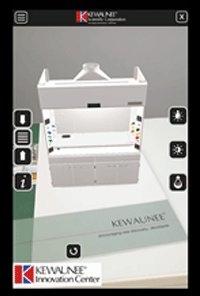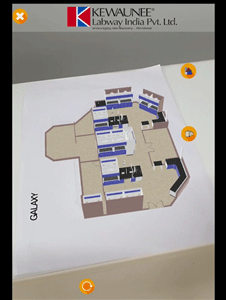How A Video Game Technology Is Changing Laboratory Design Construction
Remember Pokémon Go? The game that popularised augmented reality (AR) technology and offered an “augmented” experience for the players.
Now the same augmented reality technology is making waves in lab construction. From lab design to operations there’s immense opportunities available to grab.
Augmented reality combines the physical with the digital. Combining the two improves collaboration, accuracy, and confidence in the lab projects.
Let’s find out how.
THE NEED FOR AUGMENTED REALITY IN LAB DESIGN & CONSTRUCTION

2D model on blueprints was a widely used design tool. Then the 3D models started replacing paper based 2D models. The 3D models, however, are limited by physical tools and constraints. They are rigid and doesn’t offer an interactive experience.
The key challenges of rigid mediums are:
In the laboratory construction industry, where human-human & human-machine collaboration is high, AR can enhance the working relations. Using the latest camera and sensor technologies, augmented reality combines the physical dimension with computer-generated information and presents it in real-time. With AR, users can overcome the limitations of physical tools and combine it with an interactive experience.
While the application of AR in construction is limitless, simulations and training are the two key emerging areas in the construction projects.We are at the cusp of the next innovation cycle – an interactive experience.
AUGMENTED REALITY VS VIRTUAL REALITY
A common question I get asked is; how AR is different from VR?
Physical – that’s the key differentiator. Virtual reality is a digital experience. Augmented reality combines physical and digital into one immersive environment.
Going back to our Pokémon example, do you remember the people criss-crossing streets and shops peering into their mobile device? AR renders a person’s physical surroundings into a mobile device or special helmet. As the user interacts with the physical surrounding, the information is updated real-time in the device.
Let’s take lab construction for example.
Using GPS and cameras, the AR unit can present information such as schedules, operational details, and structural plans, as users move through the building. Such an ability will be an enormous boost to the lab construction projects.
HOW AUGMENTED REALITY IS USED IN LAB DESIGN & CONSTRUCTION?
AR combines the physical with the digital in real-time. Let’s now explore the applications of AR for the laboratory projects.

LAB DESIGN
One of the main challenges for lab planners and designers is presenting their vision to stakeholders in the project. Scientists, researchers, lab managers, and project sponsors struggle to grasp the complexities of design documents at an early stage. Augmented reality allows clients to get a view of the project in a format they understand. By simplifying the designs and involving stakeholders early, AR can help avoid costly changes later. As the construction progresses, AR also helps keeps clients engaged in the project. In fact, 2D models are still prevalent. Recent developments in augmented reality are making it possible to generate 3D models on a 2D laboratory plans.
DESIGN MODIFICATIONS
Accuracy is an important in a lab project. With AR users can walk-around the project site and visualise their labs before construction begins. Thus, lab projects can avoid schedule slippages, cost overruns, and identify any mistakes before they come to light. Users can change the design as they walk through. Users can toggle on-off layers – such as pipes, ventilation, walls, furniture etc – to understand how they come together and interact. Once all the desired changes are in place, experts analyse the suggested changes in the virtual environment and apply to their designs.
PROJECT STATUS
Augmented reality allows users to virtually monitor their lab construction progress. By combining real-time construction status from the construction site, AR provides for effective project reviews. AR can thus offer an additional level of project management, helping boost the productivity and efficiency of construction projects.
SAFETY TRAINING
Safety is a top priority in the lab industry. Despite heavy investment into safety programs, incidents continue to occur. Augmented reality helps with safety training during the lab construction and operations phases. With the help of an AR headset, lab managers and users can understand their physical environment better. Overlaid safety instructions, alerts, and guidelines on the physical environment will help avoid costly downtime and save precious lives and resources.
PROS & CONS OF AUGMENTED REALITY
Augmented reality is a promising technology to improve the way laboratories are designed, constructed, and operated. As an emerging technology, there are important pros and cons to consider.
| PROS | CONS |
| Avoid costly mistakes and changes | Damages to equipment/IoT devices in the open |
| Enhanced stakeholder collaboration and understanding of project | Learning curve for new users |
| Better project management |
IN SUMMARY
Augmented reality is growing fast. With the technology maturing and cost of ownership declining, many companies have adopted AR for their construction projects. While there are many advantages from AR, new users must know the limitations of the technology. From eliminating errors, improving project viability, and offering insights, augmented reality has a significant role to play in lab construction projects.
At Kewaunee, we have seen a spike in interests from our customers. I’m certain within a few years, we can expect AR driven lab projects to become a common fixture.
Comments are closed.











